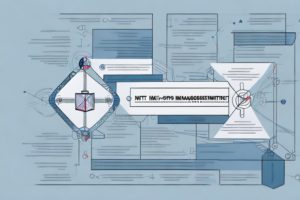What are the 3 P’s of risk management?

Three overlapping circles
Risk management is an essential part of running a successful business. It involves identifying potential risks and implementing strategies to mitigate those risks. Effective risk management can help protect your business from financial losses or reputational damage. In this article, we’ll discuss the three P’s of risk management: people, process, and technology.
Understanding the importance of risk management in today’s business world
Businesses are facing an increasing number of risks in today’s world, including cybersecurity threats, natural disasters, regulatory compliance issues, and more. These risks can have a significant impact on a business’s bottom line and reputation. Implementing a comprehensive risk management program can help businesses identify and mitigate these risks. By doing so, businesses can protect their assets, maintain their reputation, and improve their long-term sustainability.
One of the key benefits of implementing a risk management program is that it can help businesses make more informed decisions. By identifying potential risks and their potential impact, businesses can make better decisions about where to invest their resources and how to allocate their budget. This can help businesses avoid costly mistakes and ensure that they are focusing their efforts on areas that will provide the greatest return on investment.
The basics of risk management: a comprehensive overview
Effective risk management involves a comprehensive approach to identifying, assessing, and mitigating potential risks to a business. This process typically involves the following steps:
- Identifying potential risks
- Assessing the likelihood and impact of those risks
- Implementing strategies to mitigate those risks
- Monitoring and evaluating the effectiveness of the risk management program over time
It is important to note that risk management is not a one-time event, but rather an ongoing process that requires continuous attention and adaptation. As new risks emerge and business environments change, risk management strategies must be updated and refined to ensure their continued effectiveness. Additionally, effective risk management requires collaboration and communication across all levels of an organization, from top executives to front-line employees. By taking a comprehensive and proactive approach to risk management, businesses can minimize potential losses and protect their long-term success.
The three P’s of risk management: people, process, and technology
The three P’s of risk management refer to the three key factors that contribute to effective risk management: people, process, and technology.
Why people are crucial to effective risk management
People are a critical component of effective risk management. This includes everyone from employees to management to stakeholders. Effective risk management requires a culture of risk awareness and a willingness to proactively identify and mitigate risks. By involving employees and stakeholders in the risk management process, businesses can improve their overall risk management efforts.
How to identify and manage risks associated with your employees
Employees can be a potential source of risk for businesses. This includes risks associated with their behavior, such as fraudulent activity or unintentional data breaches. Businesses can mitigate these risks by establishing clear policies and procedures around acceptable behavior, providing training and education to employees, and monitoring employee activity for potential risks.
The role of process in risk management and how it can help prevent losses
Processes are another critical component of effective risk management. This includes internal processes within the business and processes related to external factors, such as compliance with industry regulations. By developing clear processes and procedures for identifying and mitigating risks, businesses can reduce the likelihood of financial losses or other negative consequences.
Common risks associated with business processes and how to mitigate them
There are several common risks associated with business processes, including supply chain disruptions, insufficient data security measures, and inadequate disaster recovery plans. Businesses can mitigate these risks by implementing processes and procedures to address these potential risks proactively.
The impact of technology on risk management and how to leverage it for success
Technology plays an increasingly important role in risk management. This includes tools for identifying and assessing risks, monitoring activity for potential threats, and automating risk management processes. By leveraging technology effectively, businesses can improve their risk management efforts and reduce the likelihood of negative consequences associated with potential risks.
The most important technology tools for effective risk management
There are several key technology tools that businesses can use to improve their risk management efforts. This includes risk management software, data analytics tools, and cybersecurity solutions. By selecting and implementing the right technology tools for their specific needs, businesses can improve their risk management capabilities and reduce the likelihood of potential risks.
Best practices for implementing a successful risk management program
Implementing a successful risk management program requires careful planning and execution. This includes developing a clear understanding of potential risks, selecting the right tools and resources, and involving employees and stakeholders in the risk management process. Businesses should also establish a process for monitoring and evaluating the effectiveness of their risk management program over time.
How to measure the success of your risk management program
Measuring the success of a risk management program involves identifying key performance indicators (KPIs) and establishing clear metrics for success. This could include metrics related to the number or severity of identified risks, the effectiveness of risk mitigation strategies, or the level of employee engagement in the risk management process. By establishing and tracking these KPIs, businesses can ensure that their risk management program is effective and making a positive impact.
Real-world examples of companies that have successfully implemented the 3 P’s of risk management
Several companies have successfully implemented a risk management program that incorporates the three P’s of risk management. For example, Microsoft has a comprehensive risk management program that includes a focus on people, process, and technology. Microsoft has established a culture of risk awareness and has implemented processes and controls to mitigate potential risks. The company also leverages advanced technology tools and resources to improve its risk management efforts.
Tips for getting started with your own risk management program
If you’re considering implementing a risk management program for your business, there are several key steps you can take to get started. This includes assessing potential risks, identifying key stakeholders, selecting the right tools and resources, and establishing a process for monitoring and evaluating the effectiveness of your risk management program over time.
Common pitfalls to avoid when implementing a risk management strategy
When implementing a risk management strategy, there are several common pitfalls to avoid. This includes failing to involve employees and stakeholders in the risk management process, relying too heavily on technology without implementing effective processes and controls, and failing to regularly monitor and evaluate the effectiveness of your risk management program.
In conclusion, effective risk management requires a comprehensive approach that incorporates the three P’s of risk management: people, process, and technology. By implementing a successful risk management program, businesses can reduce the likelihood of financial losses or reputational damage associated with potential risks.



